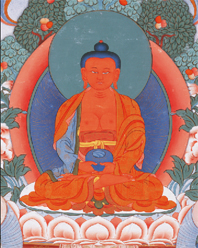Phowa

Phowa (Wyl. ‘pho ba) — the practice for directing the transference of consciousness at the time of death. It is one of the Six Yogas of Naropa.
Subdivisions
Tsele Natsok Rangdrol lists five kinds of phowa:
- dharmakaya transference free from focus (chos sku gtad med kyi 'pho ba)
- sambhogakaya transference of unity (longs sku zung 'jug gi 'pho ba)
- nirmanakaya transference of training (sprul sku rtsal sbyong gi 'pho ba)
- guru's transference of blessings (byin rlabs bla ma'i 'pho ba)
- unmistaken khachö transference ('chugs med mkha' spyod kyi 'pho ba)
Patrul Rinpoche mentions another list of five kinds of phowa:
- Superior transference to the dharmakaya through the seal of the view
- Middling transference to the sambhogakaya through the union of the generation and completion phases
- Lesser transference to the nirmanakaya through immeasurable compassion
- Ordinary transference based on three ideas
- Transference performed for the dead with the hook of compassion
Empowerments and Transmissions
- Tulku Pegyal Rinpoche was the first teacher to give Amitabha empowerments and teachings to the Rigpa sangha for the practice of phowa from the Longchen Nyingtik tradition. He did this on several occasions.
- Chagdud Khadro has also given the Rigpa sangha Amitabha empowerments and taught the phowa practice of Longsal Nyingpo on different occasions.
Further Reading
- Chagdud Khadro, P’howa Commentary, Pilgrims Publishing, India, 2004
- Sogyal Rinpoche, The Tibetan Book of Living and Dying